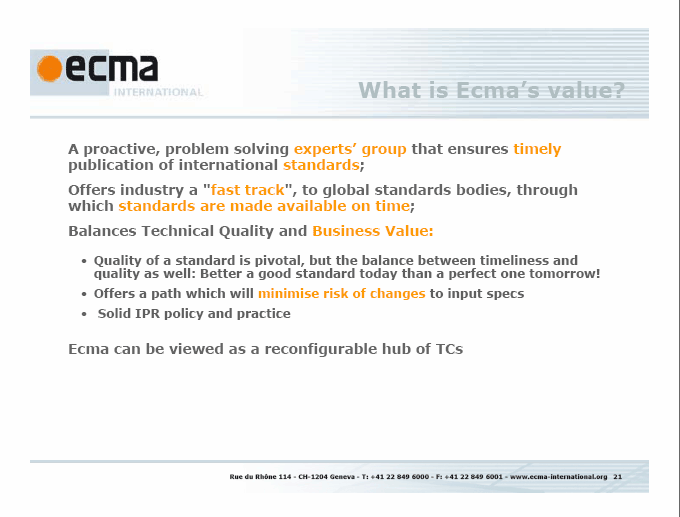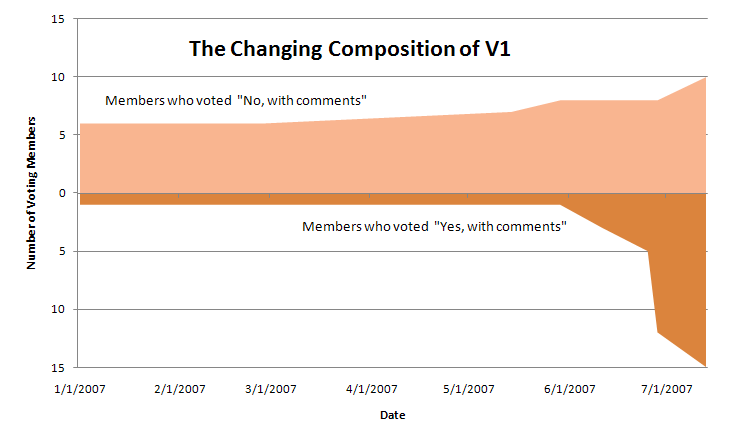This was my response to the call for public comments on the Information Technology Division’s (ITD) Enterprise Technical Reference Model (ETRM) 4.0 draft.
I’d like to write to you as a long-time Massachusetts resident and taxpayer. My employer (IBM) will likely submit their own comments, but I’d like to offer you my own personal views on the ETRM 4.0 draft.
I am proud of the Commonwealth’s tradition of openness in government, enshrined in our Public Records Law and Open Meeting Law. As James Madison wrote, “A popular government, without popular information, or the means of acquiring it, is but a prologue to a farce or a tragedy. A people who mean to be their own governors must arm themselves with the power which knowledge gives them.” So access to government documents, now and for posterity, is critical for public oversight and participation in government, as well as for preserving our heritage. Now that we’ve moved into the digital age, access to government documents requires that these documents be made available in a format that all Commonwealth residents can read. So the move toward open documents formats, as called for in the ETRM, is laudable. A citizen must never be dependent on any single vendor for the software needed to read their government’s documents.
However, I am concerned at the proposed addition of Ecma Office Open XML (OOXML) to the list of acceptable document formats. As you may have heard, OOXML is currently undergoing review by ISO/IEC JTC1 for possible approval as an ISO standard. As part of this review, technical committees in standards bodies around the world are reviewing OOXML and appraising it’s suitability as an International Standard. As a participant in the US committee reviewing OOXML, INCITS V1, I had the opportunity to review the text of the OOXML specification and to discuss it with others. I am sorry to report that I found the OOXML specification to be full of errors and omissions. Of course, no technical document is perfect. But this one, in particular, is of far greater length (more than 6,000 pages) and of far lower quality than any I have seen before. If it has advanced this far in the ISO process it is because of vendor pressure, not because of technical merit.
What is the problem with a buggy standard? Interoperability suffers. That is the problem. There is no doubt that if everyone in the Commonwealth used Microsoft Office 2007 on Windows Vista, that their interoperability will be good. But as soon as we admit choice in applications and operating systems, then interoperability will only occur when all sides follow a common standard. So the technical quality of a standard (accuracy, comprehensiveness, level of detail, consistency, etc.) is directly proportional to the level of interoperability achievable and the cost to achieve it.
The ISO ballot on OOXML will not end until September 2nd, after which a resolution process to fix defects in the text of the standard will take at least an additional 6-18 months. That is, of course, if OOXML gains ISO approval, something which is not certain at this point. So I would recommend a cautious approach, and wait for the ISO process to conclude, or conduct your own independent technical evaluation of the OOXML specification to confirm its technical quality before adding OOXML to your list. Ask other vendors: Is this something you can implement? Ask yourself: Will this truly give the Commonwealth the interoperability and choice that you desire? These are important questions to ask.
Finally, I’d note that the ETRM also calls out OpenDocument Format (ODF) as an acceptable format. ODF was approved by ISO last year. So why do we need OOXML? I personally think that the complexity of document exchange and translation in a multi-format world would take us back to the confusion and frustration of the early 1990’s when we all juggled WordStar, WordPerfect, Word and WordPro files, and could collaborate only poorly. Better to push for a single unified/harmonized standard document format for personal productivity applications, much as we have a single standard (HTML) for web pages.
I’ll leave you with a quote from Tim Berners-Lee, the inventor of the web, from an interview he gave with David Berlind from ZDNet when Berners-Lee was recently in Boston receiving a Lifetime Achievement Award from the Massachusetts Innovation & Technology Exchange.
Berners-Lee said:
It was the standardization around HTML that allowed the web to take off. It was not only the fact that it is standard, but the fact that it’s open and the fact that it is royalty-free.
So what we saw on top of the web was a huge diversity and different business which are built on top of the web given that it is an open platform.
If HTML had not been free, if it had been proprietary technology, then there would have been the business of actually selling HTML and the competing JTML, LTML, MTML products. Because we wouldn’t have had the open platform, we would have had competition for these various different browser platforms, but we wouldn’t have had the web. We wouldn’t have had everything growing on top of it.
So I think it very important that as we move on to new spaces … we must keep the same openness we that had before. We must keep an open internet platform, keep the standards for the presentation languages common and royalty free. So that means, yes, we need standards, because the money, the excitement is not competing over the technology at that level. The excitement is in the businesses and the applications that you built on top of the web platform.
I believe we want to ensure the same qualities in document formats. We want competition and choice among vendors, applications and services, but not among standards. If we compete on standards, then no one wins.

